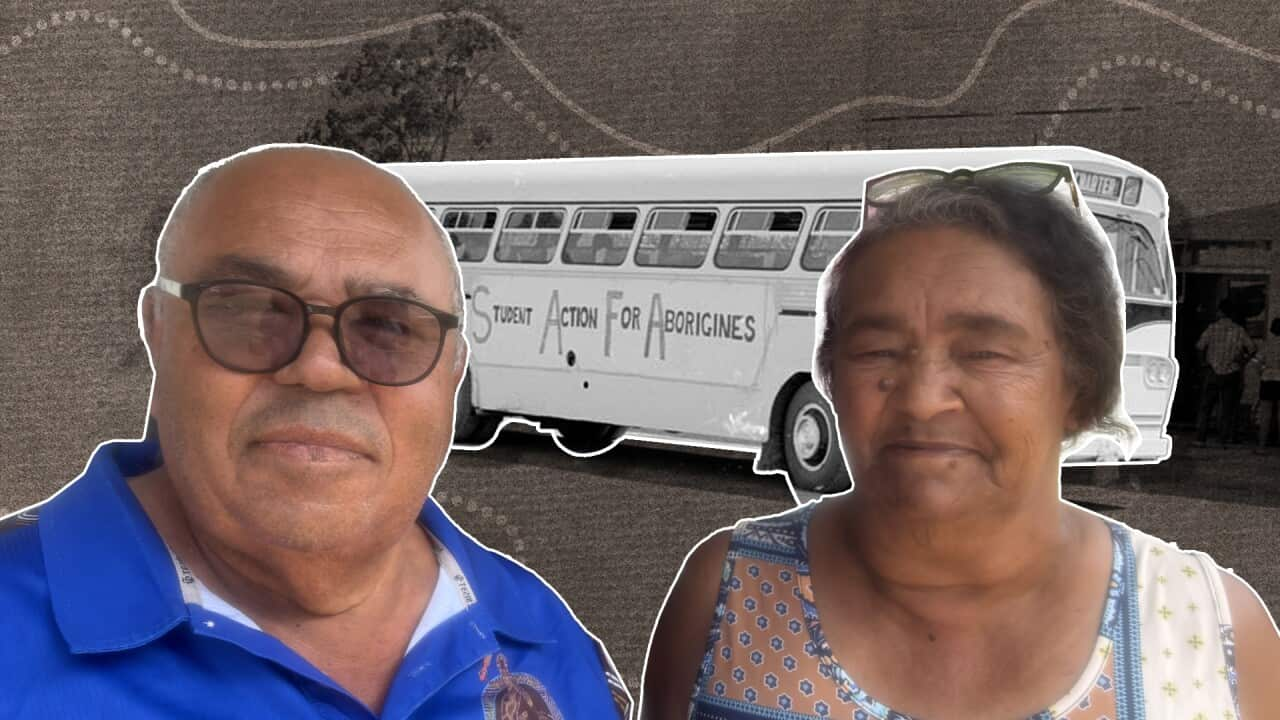Warning: this article includes images and names of Aboriginal and Torres Strait Islander people who have died.
Photojournalist and storyteller Wayne Quilliam doesn't like to pick favourites - but the day Prime Minister Kevin Rudd delivered the Apology to the Stolen Generations, February 13, 2008, was extraordinary.
"Over 35 years of working in our communities, I've always felt honoured that people have allowed me into their lives to share their stories and I like to become a part of it - I don't want to sit back as an outsider," he told NITV.
"And I think when I look back at the images, and I remember the day and all my friends and the new friends that were created on the day, it was such an extraordinary moment in Australia's history that I'd have to say it was the most important shoot I've ever done in my life.
"And I won't even call it a shoot, because the most important part was storytelling our history.
"I can literally talk for hours about all the what I call little spotfires of emotive outpours the images inspire, every time I look at them I go, 'Wow, I remember'.
I can actually hear and smell and sense every photo, and I still get that beautiful sense of coming together as a people - it was beautiful.
READ MORE

After The Apology
Quilliam was the official photographer for the day - and many of his stunning images have since become ingrained in the story of the Apology - part of the fabric of that moment in history that meant so much to the members of the Stolen Generations, their families and to all Aboriginal and Torres Strait Islander people.
"It was the hope of what could be and what will be, but remembering what was," he said.
But of course, even on such an important day, with so much planning - with the sheer number of people in Canberra and the mixed emotions of nerves, joy, sadness and excitement - there was always going to be a little bit of drama.
"I honestly had no concept of what I wanted to shoot or how to shoot it. It was very flawed and extremely manic," Quilliam said.
"I was basically pulled from pillar to post to many places."
One minute Indigenous Affairs Minister Jenny Macklin was calling him to her office for an important group photo, then next Quilliam was sharing a joyful laugh with actor Ernie Dingo.
And then it was time to go to the gallery in Parliament House - to be there when Kevin Rudd said 'sorry'.

Prime Minister Kevin Rudd and Opposition Leader Brendan Nelson. Credit: Wayne Quilliam
"Even though we were stuck way out the back, way in the middle of nowhere, we were still there and looking around - you always look around, I've got my head on a swivel, it's like 360 degrees.

Wiradjuri woman Linda Burney watching the Apology. Credit: Wayne Quilliam
"There were just so many things to photograph it was just impossible to not put your camera somewhere and just capture something."

Photographer Wayney Quilliam will never forget "seeing the Aunties on the floor" of Parliament House for the Apology. Credit: Wayne Quilliam
Quilliam describes the iconic image of , Yolngu educator, linguist and reconciliation advocate, holding baby Marley Hosch as his longest journey of a photograph.

Dr Raymattja Marika holding Marley Hosch. Credit: Wayne Quilliam
But when he landed in Darwin, Dr Marika wasn't at the airport.
"We were a little bit confused, because she was never on Blackfella time, she was always there," Quilliam said.
When he followed up, Quilliam was given the devastating news that Dr Marika had gone back to Country and passed away.
"That was highly unexpected, so we had to go through a fair bit of time with community, because her photograph was on the posters and you had the significance of who she was," he said.

Prime Minister Kevin Rudd and Indigenous Affairs Minister Jenny Macklin greet Dr Lowitja O'Donoghue. Credit: Wayne Quilliam
"That still sticks with me, and I tell that story when people don't quite understand our role as Indigenous storytellers, about how it is so important that we follow and we adhere to cultural protocols.
"It's about what the community needs."
When he looks back on the historic day of February 13, 2008, the Apology, what stands out is in stark focus for Quilliam.
"I'm not the best photographer in the world, I don't know the technicalities of photography and all the weird, wonderful things," he says.

"My photos are an emotive capture of who we are and what we do." Credit: Wayne Quilliam
"It makes me so happy and so connected to everybody when we all feel the same sort of thing and that's what I try and teach the young ones.
"It's great to know your equipment and all the technicalities but the reality is the emotion that people give you and you're able to record is a moment in history."

"The emotion that people give you and you're able to record is a moment in history." Credit: Wayne Quilliam



